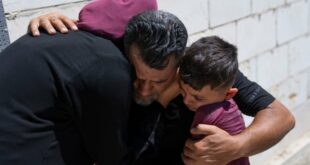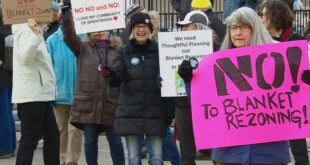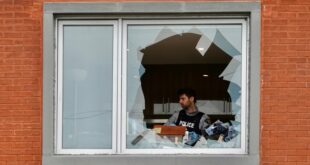Robert Huot is still fighting for access to the land he bought back from the Canadian government in 2019.
Robert Huot says he will never forget when his parents’ land and home were expropriated and burned to the ground in 1969 to make way for an airport about 50 kilometres north of Montreal.
His family had just gotten the last of the furniture out of the home when Canadian employees lit it and the barn on fire, destroying all structures in the way of progress.
“They never used that land,” said Huot, who was 14 at the time.
More than 800 houses were destroyed back then and 12,000 people were forced to relocate.
Thousands of hectares in Mirabel, Que., have been sold back to families, but wounds like Huot’s remain unhealed. On Monday, Aéroports de Montréal (ADM), announced it is dedicating four hectares, roughly the size of eight soccer fields, for the creation of a memorial site to honour those who lost land and homes to the airport expropriations.
The land is located along Guy-Lafleur Highway, at the entrance to what is now known as YMX International Aerocity of Mirabel — a cargo airport that’s also used for industrial and aeronautical development.
The plot of land is being leased for the ceremonial price of $1 to the Centre de mémoire collective de l’expropriation de Mirabel (CMCEM), an organization dedicated to commemorating the expropriations of 1969. Some 40,000 hectares were expropriated back then.
“It is with a great respect for the past that we must continue to build our future,” said Philippe Rainville, president and CEO of ADM, in a news release.
Rainville said negotiations with the CMCEM began before the pandemic. And according to the CMCEM, the gesture of giving the land to the organization “puts an end to this conflict,” he said.
Remembering those who lost homes
Françoise Drapeau-Monette, a co-founder of the CMCEM, said her organization has been working on establishing a memorial and centre for families since 2007. The four hectares will provide the space needed for a parking lot and facility, she said.
Denise Beaudoin, also a co-founder, described Monday’s announcement as “memorable and historic.”
“I think the expropriated are very happy because finally, they will have a centre they can call their own,” Beaudoin said.
It’s a way of taking the land back and giving it to the people who suffered, she said.
But for Huot, the painful chapter in his life will not be undone until his family can once again build and live on the land they once owned.
Of the land the Huots had, one plot was used for agriculture and another for sugaring. Huot was able to purchase the unused land in 2019, and his son hopes to one day tap the maples that still thrive there.
Yet all these decades later, still deeply entrenched in negotiations with Transport Canada, he can’t access the land as there’s no road.
“It’s not settled for us,” said Huot, whose land is located beyond the ADM’s fences.
Monday’s announcement was just “another trophy for the ADM because, really, they just want us to stop talking about this,” he said.
International airport flops
In 1969, the public was promised an international airport and high-speed rail transit connected to Montreal.
Former prime minister Pierre Trudeau opened the airport to great fanfare in 1975. Supporters predicted that Mirabel would become a gateway to the world, luring 60 million passengers annually by 2010. But it never really took off.
At its peak, it drew no more than three million people a year. The high-speed rail was never built, and international passenger flights came to an end in 2004 as the airport was running an annual deficit of $20 million.
As well, many parts of the airport remained unfinished, including crucial roads and terminals to serve travellers from the United States and within Canada.
Roughly 4,450 hectares of expropriated farmland was being rented by farmers up until 2006 when former prime minister Stephen Harper offered to sell it all back to the former owners. In 2014, the passenger terminal was demolished.
Then in 2019, the Canadian government announced it would sell back the last remaining unused land. Roughly 300 hectares was offered to the families and descendants of the expropriation, and the Huots were among them.
But, Huot explained, until the Canadian government enables access, his family’s land will continue to sit as it has since he watched the home and barn burn — unused.
With files from Rowan Kennedy, Radio-Canada and The Canadian Press
*****
Credit belongs to : www.cbc.ca
 Atin Ito First Filipino Community Newspaper in Ontario
Atin Ito First Filipino Community Newspaper in Ontario






